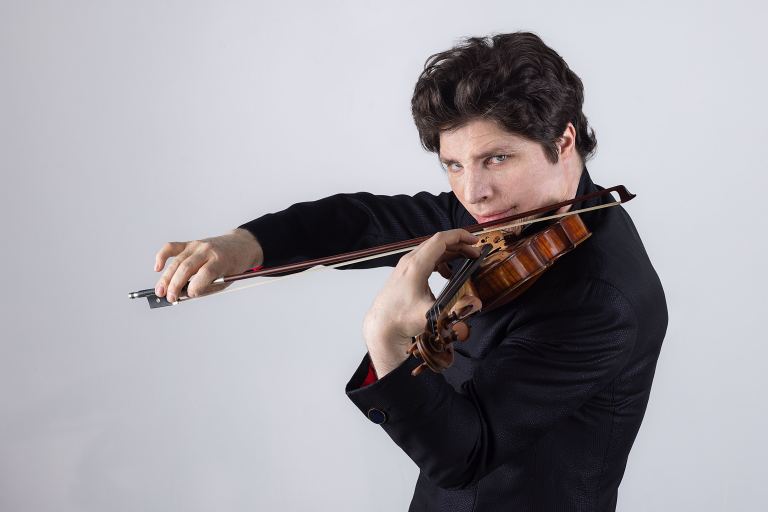Festival Orchestra:
Hadelich Plays Tchaikovsky Violin Concerto

ALSO AVAILABLE
JENNIFER HIGDON: blue cathedral
TCHAIKOVSKY: Violin Concerto in D major, op. 35
--
R. STRAUSS: Eine Alpensinfonie, op. 64
This event will also stream live on medici.tv. The world's leading purveyor of online classical events, medici.tv will present five concerts from the AMFS, August 7-10, in high-end audio and video to millions of classical connoisseurs over five continents.
The Milwaukee Shepherd Express conjectured that he "well may be the best violinist in the world. [His] gorgeous sound is ample and rich always. Every detail is played with perfectly clear intent." Augustin Hadelich’s astonishing technique, eloquent phrasing, and seeming effortlessness will be on display in Tchaikovsky's ever-popular and virtuosic Violin Concerto. Tchaikovsky wrote the work in a stunning mountain setting on Lake Geneva in Switzerland. He was inspired by a visit from the violinist Iosif Kotek, one of Tchaikovsky's admiring students who had been asking the composer for a violin concerto for some time. After Kotek graduated, Tchaikovsky confessed to his brother Modest that he was in love with him. Though Kotek was mostly heterosexual, he seems to have returned Tchaikovsky's feelings, albeit briefly. After their infatuation cooled, they remained close friends, and their collaboration produced one of the most beloved violin concertos ever written. Had Tchaikovsky not feared malicious gossip, he would have dedicated the work to Kotek, but instead dedicated it to the famous Hungarian violinist Leopold Auer, who rejected the piece as unplayable. At the premiere, the critics were especially harsh, with one calling it "music that stinks in the ear." It's hard to imagine that this mainstay of the concert stage with its ravishing melodies and thrilling pyrotechnics could have invited such a scathing response.
Strauss's Alpine Symphony is the composer's passionate and exhilarating ode to nature. His first concept for the work probably dates back to a mountaineering expedition when he was 15. In a letter, he described a storm which uprooted trees and threw rocks in the climbers' faces. He reported depicting the entire ordeal in a piano piece. It isn't known whether any of that material ended up in the symphony, which consists of 22 individual musical episodes painting a hike through the Alps. The trek begins before dawn, and features rivers, meadows, and even a hunting party. The hikers celebrate reaching the summit, only to encounter a storm on the descent. Finally, the sun sets and they return home in the same quiet of darkness that began their trip. Strauss's vivid orchestration will make you feel like you're part of the adventure.
When in 2000 Jennifer Higdon was asked to compose a piece for the 75th anniversary of the Curtis Institute of Music, the process took an unexpected personal turn. Her younger brother had just died from skin cancer, and the work became "about deciding if life was going to be about living or about death," she told the Pittsburgh Post-Gazette in 2005. "I was surprised it turned out so positively." In an experience of catharsis, Higdon crafted a sonic journey through a sacred space and upward into the heavens. It places a special emphasis on Higdon's instrument, the flute—which she taught herself to play when she was 15—and her brother's, the clarinet. The work has become her most frequently performed.
Prepare to be swept away by big orchestral sounds and the stunning artistry of Augustin Hadelich!
medici.tv’s Aspen broadcasts are made possible by a generous gift from Ann and Tom Friedman and Jacolyn and John Bucksbaum, honoring the memory of Carolyn “Kay” and Matthew Bucksbaum.